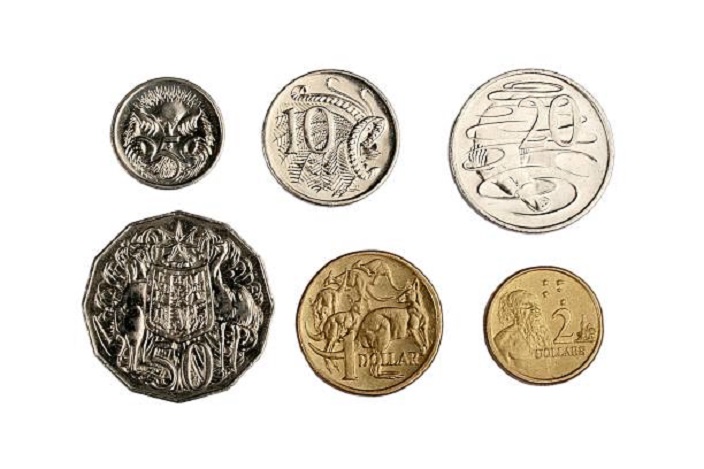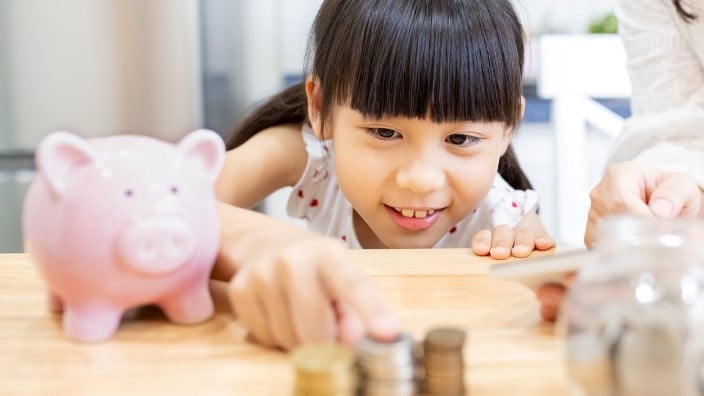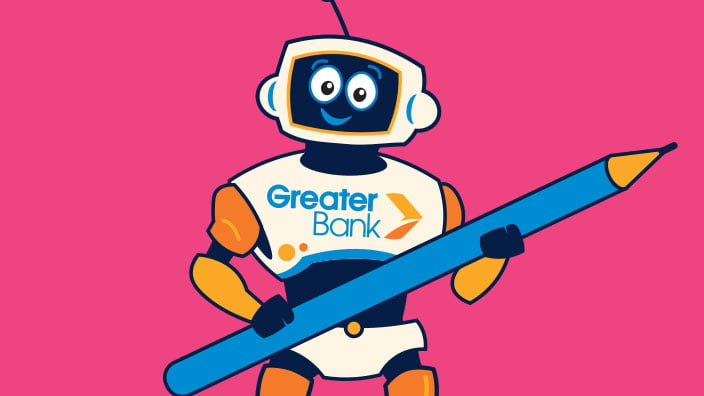The designs on one side of the coin change from time to time and differ between the value of the coins, while all Australian coins feature the Queen Elizabeth on the other side.
Tossing a coin
If you’re tossing a coin, the side with the Queen is “heads” and the other side is “tails”.)
Knowing our coins and what they are worth
 The four lowest value coins are all the same colour.
The four lowest value coins are all the same colour.
The smallest and lightest coin is the 5 cent piece. It’s silver and round.
Next up is the 10 cent coin, which is also round and silver, but heavier and bigger than the 5 cents.
Moving up value is the 20 cent coin. It’s also silver, round and again bigger and heavier than the 10 cent coin.
The Australian 50 cent piece is the most unusual. While it is largest and heaviest of the silver coins, it’s not circular like all the others, rather it has twelve sides! That’s called a dodecahedron.
The remaining two coins are both gold, but they differ from the others in that the larger one has a lower value.
The larger of the two is the $1 coin – about the same size as a 10 cent but heavier - while the smaller gold coin is the $2 coin.
It’s important to know which coin is which and how much each coin is worth so you can work out which ones you need to buy certain things!
Questions and activities
- Five coins are round, but one is a different shape. Do you know which one it is?
- Four coins are silver but two are gold. Which ones are they?
- Work out the fewest number of coins you need to make up different amounts. For example: 30 cents, 40 cents, 60 cents, 80 cents, 85 cents, 90 cents and 95 cents.
- Have a look at the different coins and see if you know what’s on the “tails” side of each one.



